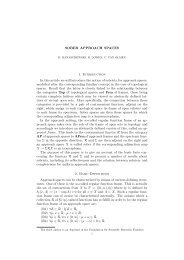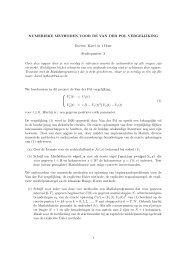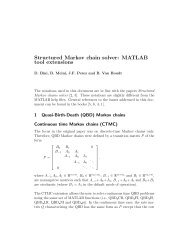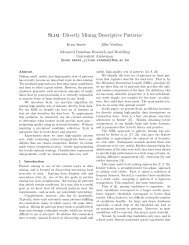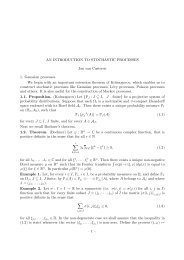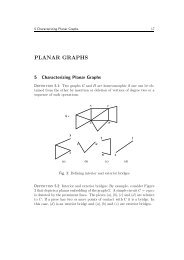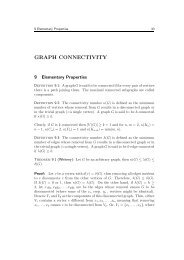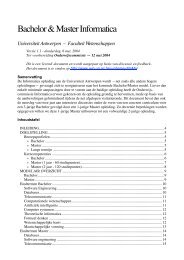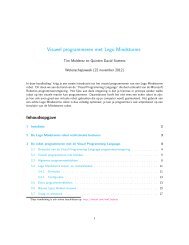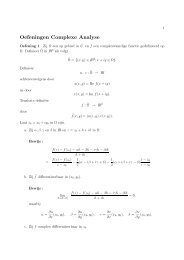Practical Rational Interpolation of Exact and Inexact Data Theory ...
Practical Rational Interpolation of Exact and Inexact Data Theory ...
Practical Rational Interpolation of Exact and Inexact Data Theory ...
You also want an ePaper? Increase the reach of your titles
YUMPU automatically turns print PDFs into web optimized ePapers that Google loves.
Barycentric representation<br />
2<br />
In this Chapter, we consider a specific representation for the rational interpolant:<br />
the barycentric form. This form stems from the Lagrange representation<br />
<strong>of</strong> interpolating polynomials. Several authors [BM97, SW86] praise<br />
its properties, both numerical <strong>and</strong> analytic. The barycentric form indeed<br />
possesses a remarkable property which makes it attractive for implementation,<br />
namely exact interpolation even in the presence <strong>of</strong> rounding errors<br />
during the computation <strong>of</strong> the coefficients <strong>of</strong> the barycentric form.<br />
First, we review the barycentric form in classical rational interpolation.<br />
The representation turns out to be advantageous for revealing common factors<br />
<strong>and</strong> unattainable points, although some care must be taken in correctly<br />
interpreting this result. Besides classical rational interpolation, we also review<br />
some other popular uses <strong>of</strong> the barycentric form, in particular a pole<br />
free rational interpolant in barycentric form with high approximation orders.<br />
Lastly, we examine the numerical properties <strong>of</strong> the barycentric representation<br />
more closely. A careful analysis shows that the barycentric form is not<br />
suited for use outside the interpolation interval. Basically, the evaluation <strong>of</strong><br />
the barycentric formula may suffer from catastrophic cancellation for large x.<br />
2.1 Classical rational interpolation<br />
Any rational function rn(x) <strong>of</strong> degree at most n in numerator <strong>and</strong> denominator,<br />
interpolating the n+1 points in Xn can be written in the barycentric<br />
form [BBM05]<br />
n<br />
rn(x) =<br />
i=0<br />
n<br />
i=0<br />
15<br />
ui<br />
x − xi<br />
ui<br />
x − xi<br />
fi<br />
. (2.1)



